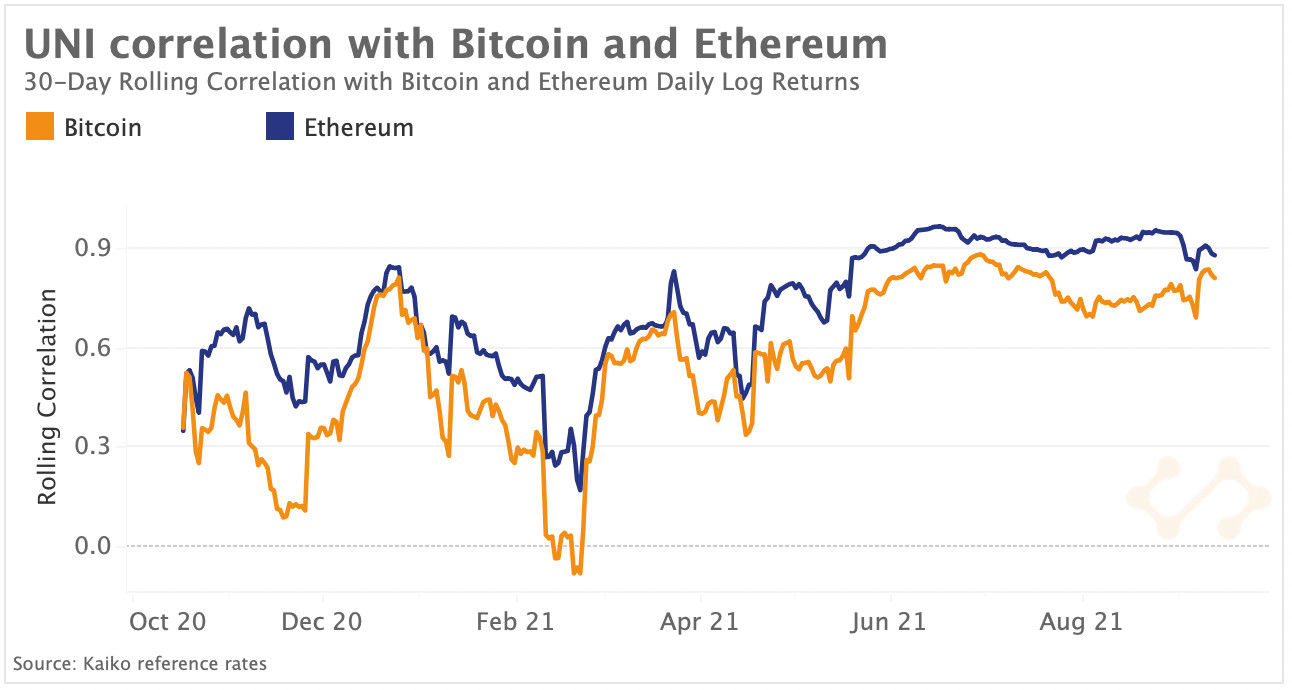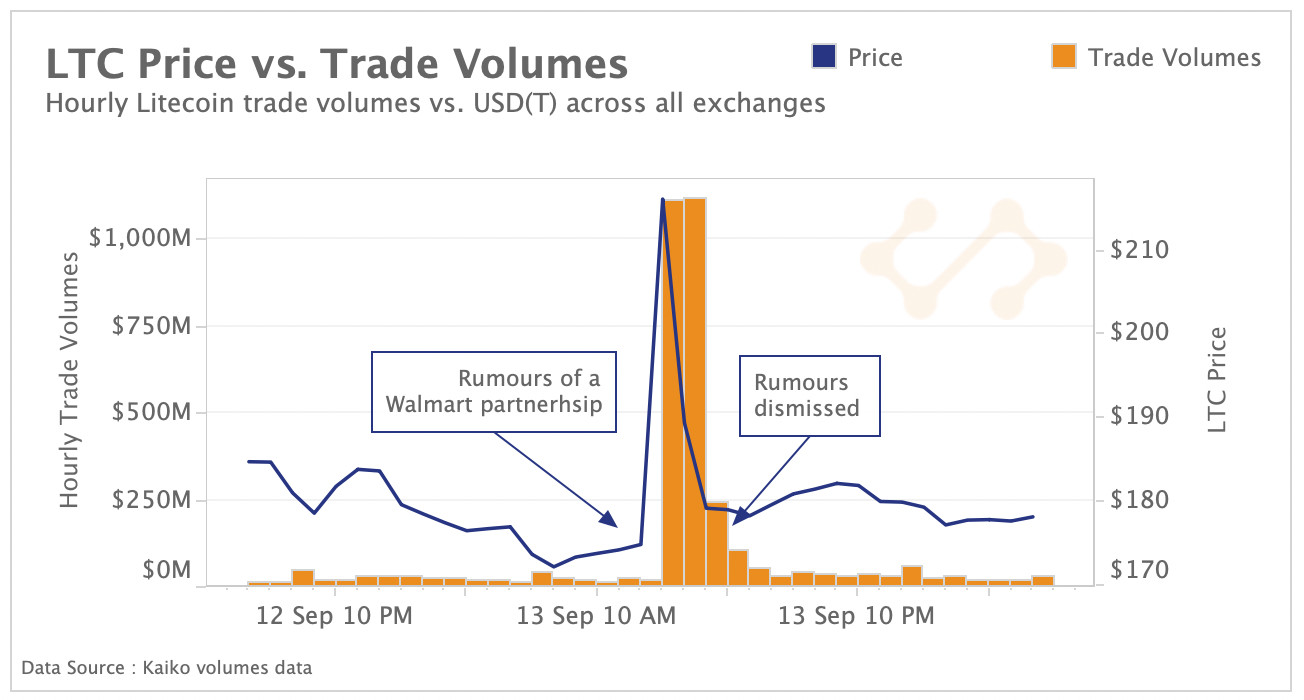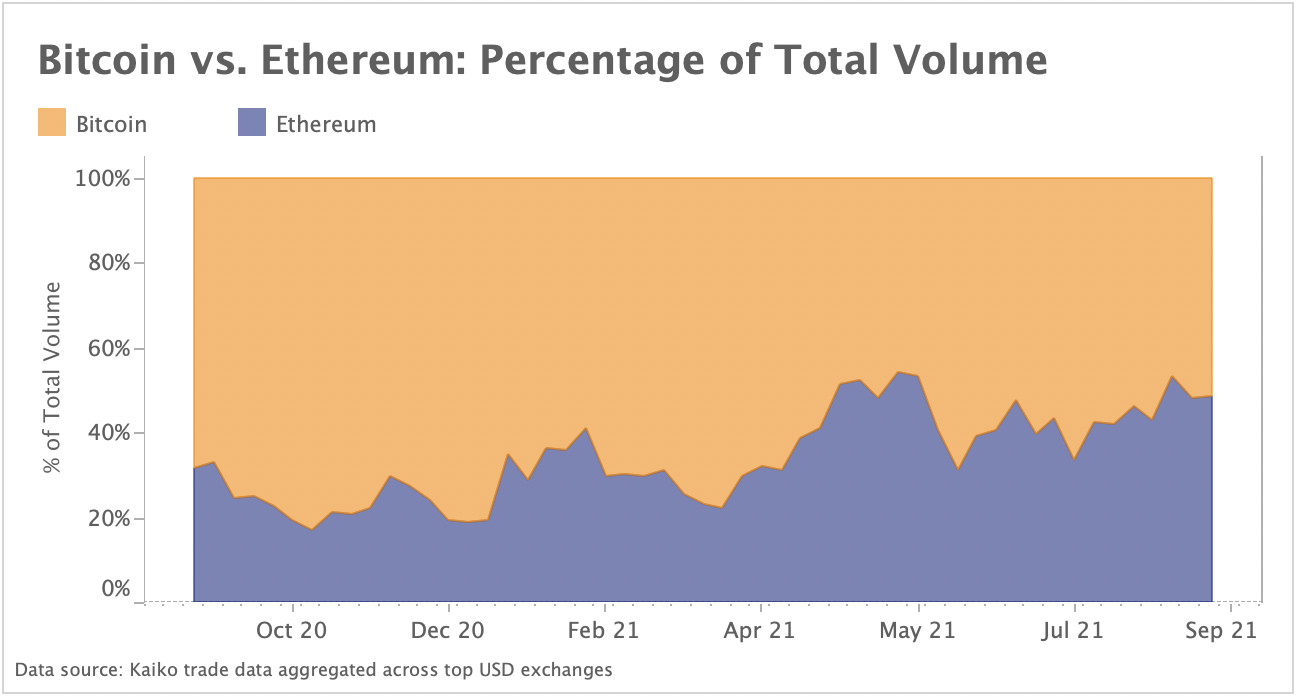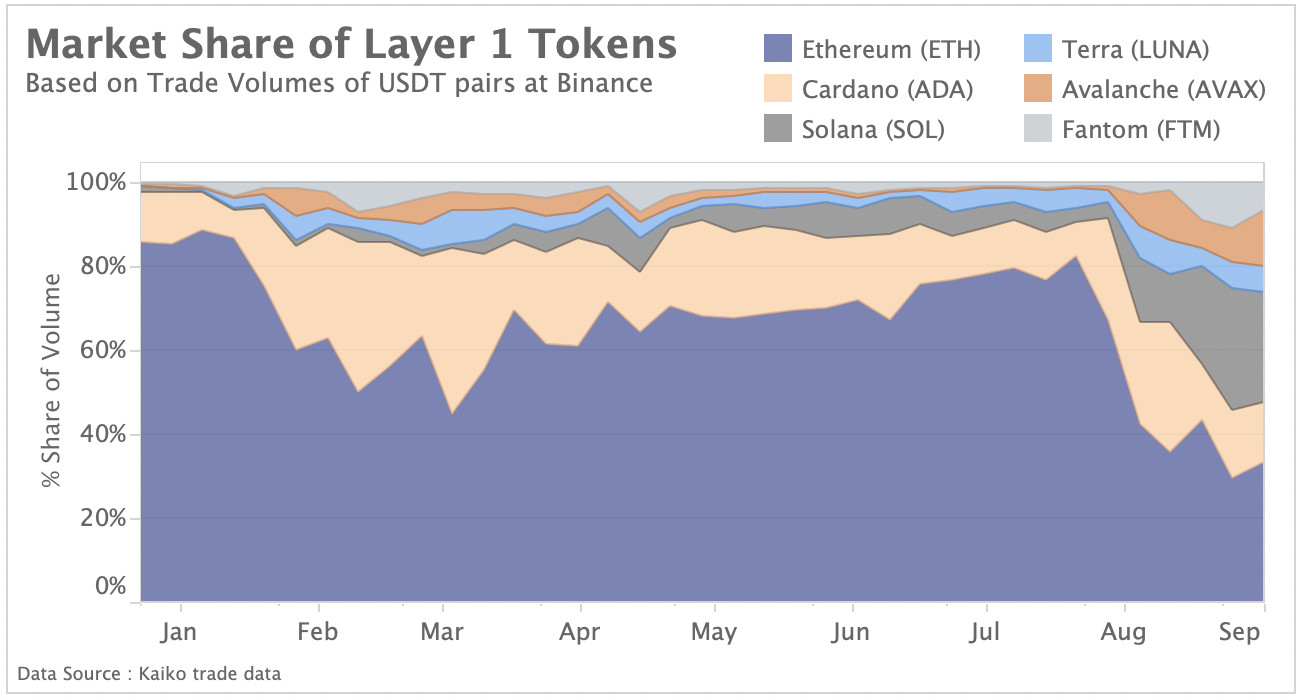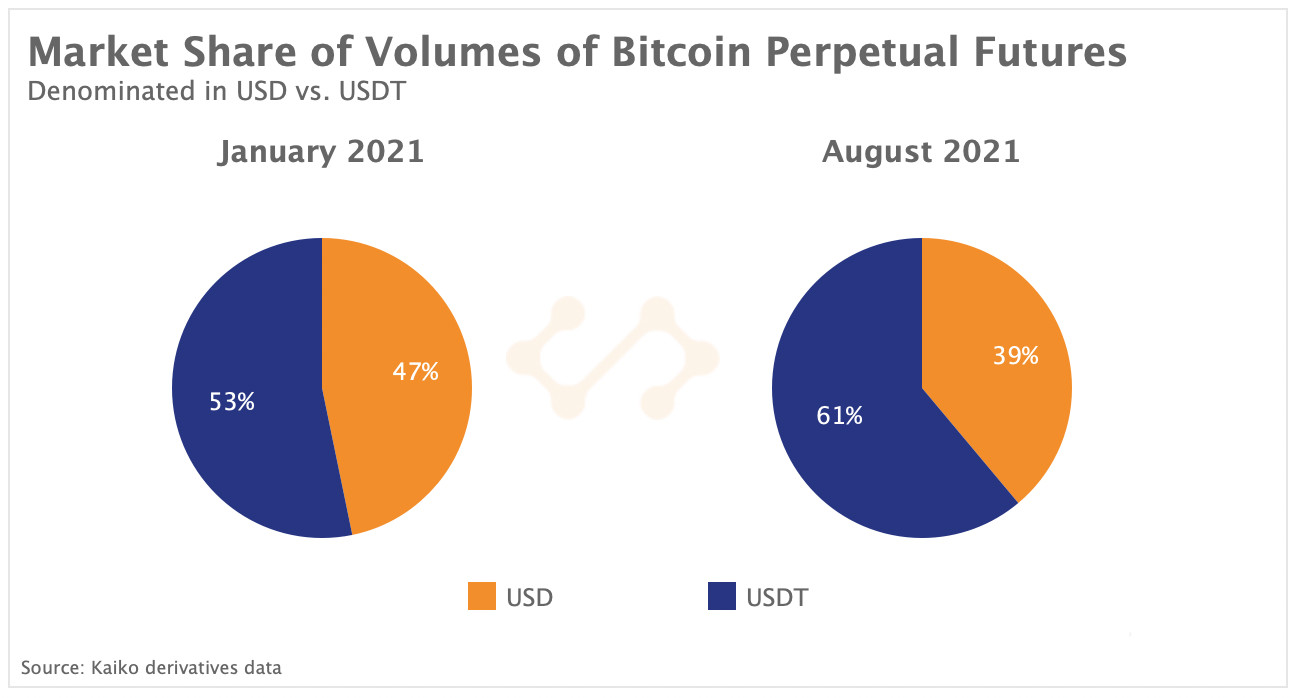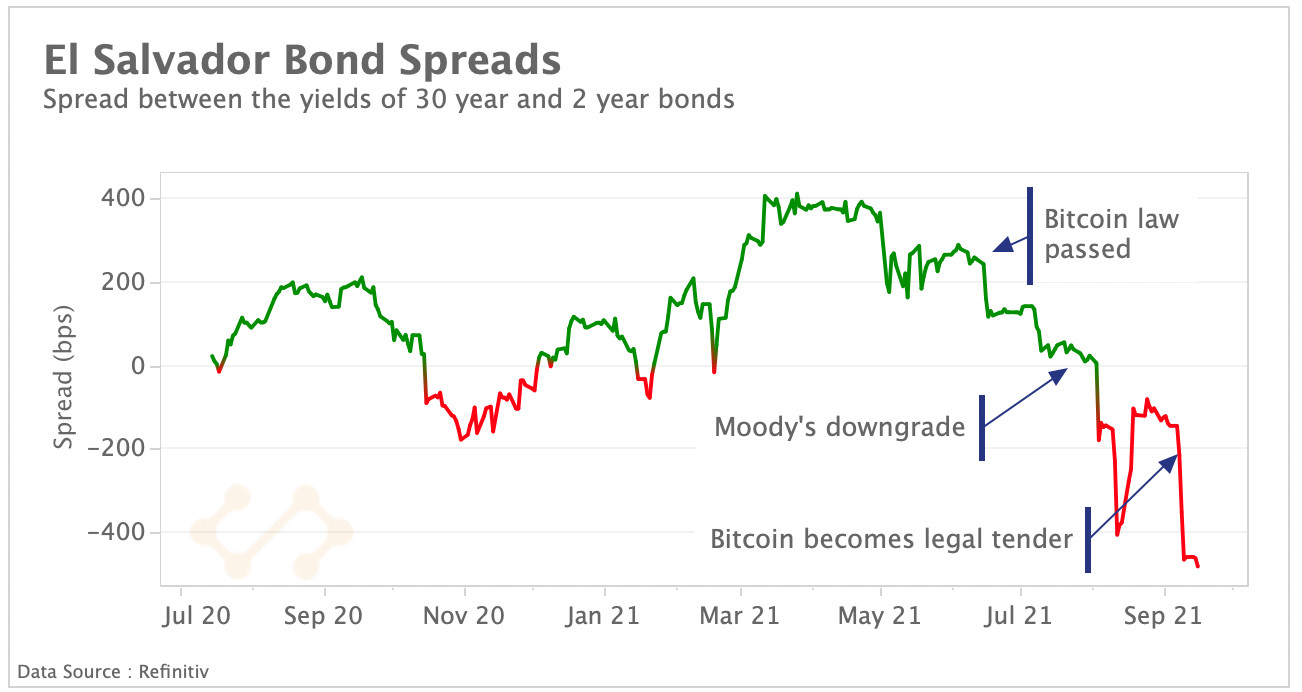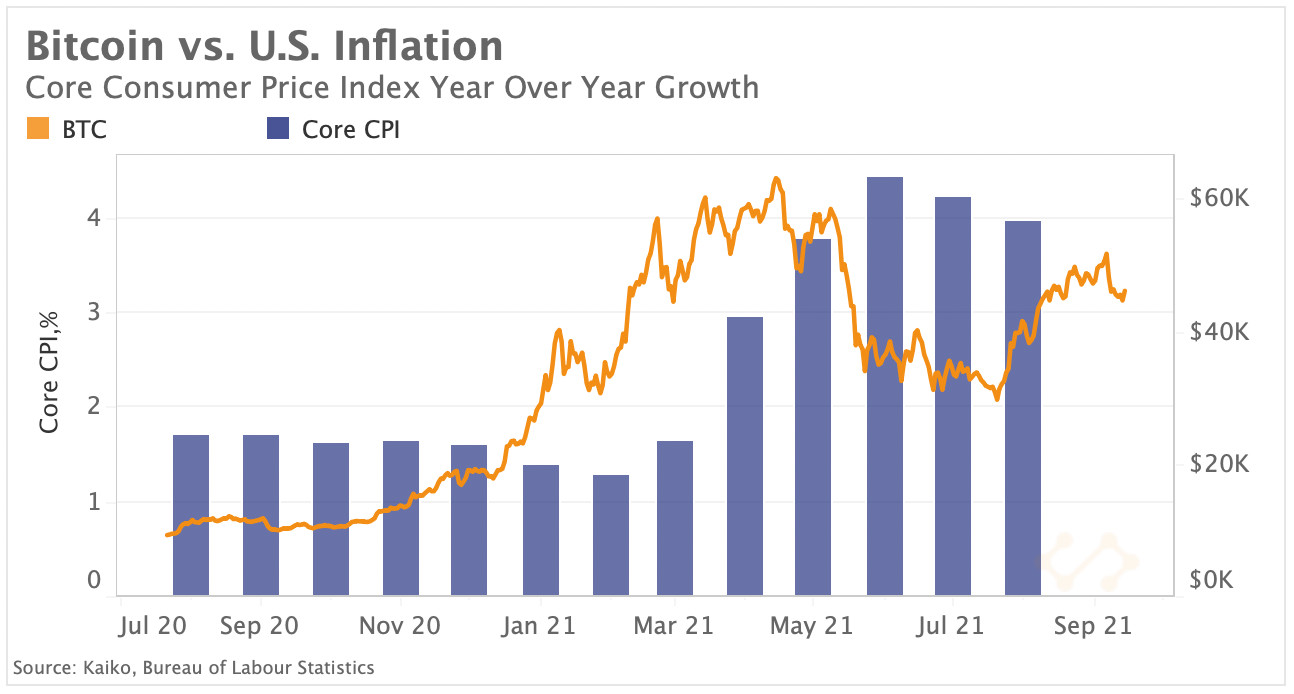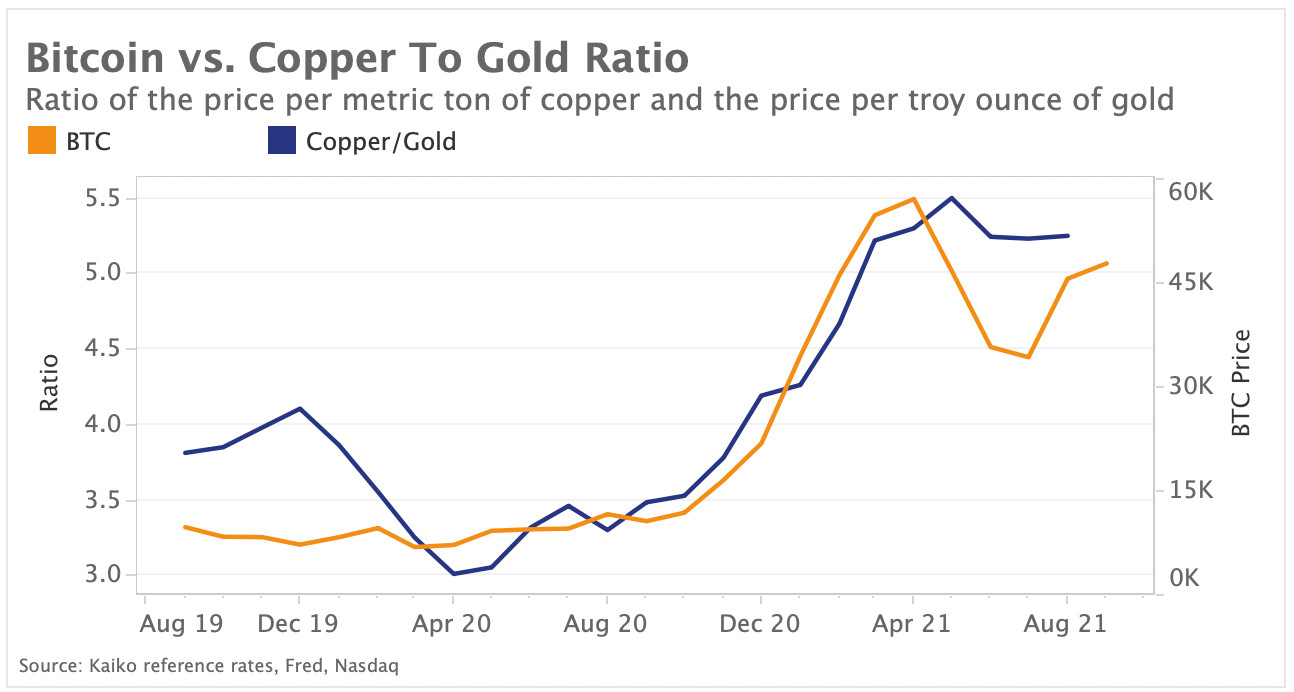A summarizing review of what has been happening at the crypto markets of the past week. A look at trending sectors, liquidity, volatility, spreads and more. The weekly report in cooperation with market data provider Kaiko.
The last 7 days in cryptocurrency markets:
- Price Movements: DeFi tokens are increasingly correlated to high-cap crypto assets.
- Volume Dynamics: Hourly trade volumes for Litecoin surged past $1 billion — up from a mere $16m — after fake news circulated about a Walmart partnership.
- Order Book Liquidity: Coinbase's Tether markets are becoming more liquid, although U.S. Dollar liquidity is still superior on fiat exchanges.
- Derivatives: The number of perpetual futures contracts issued by derivatives exchanges has soared since 2019.
- Macro Trends: Economic uncertainty in El Salvador has increased since the country officially adopted Bitcoin as legal tender.
Price Movements
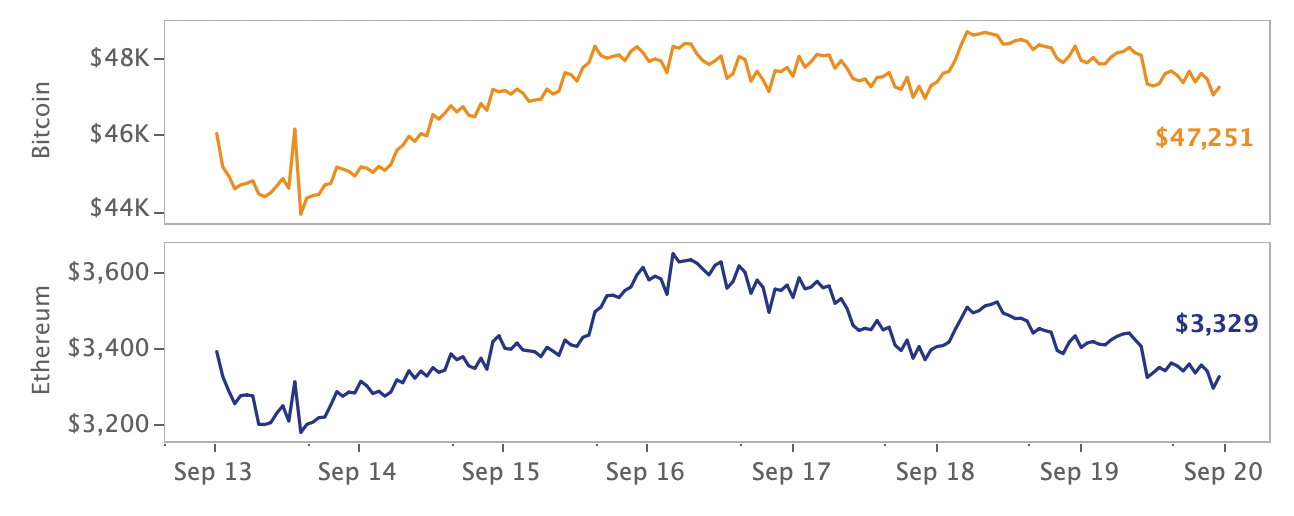
The media wields power. Last week, Litecoin suffered a pump and dump scheme involving a fake Walmart partnership that somehow trickled into the mainstream media, causing prices to briefly surge before both teams refuted the news. This incidents highlights the power that the media plays over cryptocurrency markets and how quickly rumors can spread unabated. The culprits of the fake story remain unknown and the event generated a relatively muted reaction across cryptocurrency markets. However, Bitcoin and Ethereum closed Sunday night slightly down for the week, before crashing early Monday morning.
In other crypto news, it was a busy week for Layer 1 protocols: Cardano finally implemented smart contract technology, Avalanche raised $230 million and Solana suffered an hours-long outage. In the institutional crypto sector, Swiss stock exchange SIX announced plans to launch a digital securities exchange, MicroStrategy has now invested nearly $3 billion into Bitcoin, and quant trading firm Jump Trading officially announced its crypto division.
DeFi tokens increasingly correlated to high-cap crypto assets
Last Fall, the DeFi sector underwent a historic bull run, far surpassing returns for high-cap crypto assets like Bitcoin and Ethereum. Above, we chart UNI’s correlation with BTC and ETH to understand how the DeFi sector has shifted over the past year. UNI—launched in September 2020 by the decentralized exchange Uniswap— is not necessarily a stand-in for the entire DeFi sector, but its price movements have historically been tightly correlated with other DeFi tokens such as Aave (AAVE), Synthetix (SNX), and Sushiswap (SUSHI). At launch, UNI had a relatively weak positive correlation to BTC and ETH, hovering around .5 as it soared to record highs. UNI and other DeFi tokens have historically been more tightly correlated with Ethereum (Uniswap operates on the Ethereum blockchain), but its correlation with Bitcoin increased considerably this year. For both assets, the correlation has been on a clear uptrend since Q2 which suggests DeFi token markets are increasingly correlated to wider cryptocurrency markets.
Litecoins’s manipulation mayhem
Last Monday, a press release made its way into mainstream media outlets claiming that Walmart would accept payments with the cryptocurrency Litecoin. This had a near instantaneous effect on Litecoin’s price and volumes as traders raced to profit from the news. From one moment to the next, LTC’s price gained 32% and hourly volumes surged past $1 billion, up from a mere $16 million the hour before.
Almost immediately, the news was refuted by Litecoin and Walmart executives, but the damage had already been done. It appears that Litecoin was victim of a classic “pump and dump scheme” by unknown perpetrators, highlighting the strong effect that the news media plays on market movements. The prevalence of pump and dump schemes has plummeted over the past few years as exchanges shore up their market manipulation detection, but there is little that can be done when a fake news story circulates like wildfire.
Bitcoin is losing market dominance
Bitcoin has been losing market dominance as Ethereum and other altcoins emerge as increasingly viable investment alternatives. Over the past year, we have closely followed Bitcoin and Ethereum’s evolving market share of volume on the top fiat exchanges. We can observe that today, BTC-USD volume accounts for just 44% of total trading volumes compared with ETH-USD on the top fiat exchanges, down from over 70% a year earlier. The trend suggests a lasting shift in crypto market structure as investors diversify their crypto exposure beyond Bitcoin.
Ethereum is not the only beneficiary of this diversification trend. Growing concerns over Ethereum’s scalability have led to alternate Layer 1 blockchain protocols such as Solana and Cardano to gain traction. We dive into the market share of volume for the top L1 tokens on Binance to see how Ethereum has fared:
Above, we can observe that the cumulative market share of these “Ethereum killers” has almost quintupled from 14% to 66% since the start of the year while Ethereum’s share has rapidly plunged from 86% to 33%. Solana appears to be the biggest beneficiary of this altcoin boom as its share of total volumes has increased from negligible volumes at the start of the year to 26% of L1 market share. However, frequent incidents such as the outage of Solana’s mainnet on Sept 14, could dampen the prospects of these alternate protocols.
Overall, rising L1 token dominance is a more recent trend that has not yet proved to be a lasting shift in market structure (although we will keep a close eye on it!).
Stablecoin-quoted perpetuals are increasingly popular
Cryptocurrency derivatives markets have undergone massive growth over the past couple of years, but nothing has been as impressive as the soaring popularity of perpetual futures. Perpetual futures are a special type of futures contract that do not have an expiry date, enabling a trader to hold the contract for as long as they’d like. Every cryptocurrency derivatives exchange offers perpetual futures, and most offer both USD and USDT denominated contracts. Because traders are not trading the underlying asset, unregulated exchanges are able to offer USD-denominated perpetual futures, while they are unable to offer USD-denominated spot markets.
Above, we charted the total number of perpetual futures contracts listed by derivatives exchanges and can observe the number has soared since 2019. Today, more than 600 perpetual futures contracts exist for a range of crypto assets. This trend was driven by stablecoin-quoted perpetuals which increased faster than USD-quoted perpetuals. When looking at the volume of USD vs. USDT quoted perpetual futures, we notice a similar trend:
We charted the market share of volume for USD and USDT quoted perpetuals in January vs. August 2021 aggregated across eight exchanges - Binance, Bitmex, Bybit, Huobi, Okex, Kraken, FTX and Derbit. The market share of USD-quoted perpetuals dropped from 47% to 39% over the past 8 months, which suggests traders prefer using stablecoins to trade these contracts. Stablecoins, in particular Tether, are becoming increasingly popular in derivatives markets, and it will be interesting to see if this trend continues amid the larger crackdown on both unregulated stablecoins and derivatives.
Bitcoin’s adoption exacerbates investor worries over El Salvador’s economic outlook
The recent adoption of Bitcoin as a legal tender in El Salvador increased investor’s fears over the country’s economic performance and fiscal sustainability. Above, we chart the spread between El Salvador’s 30-year and 2-year government bonds yields (also known as the yield curve). The shape of the yield curve is an indicator of future economic performance. Generally a positive yield curve is associated with economic expansion. By contrast, a negative or an inverted yield curve when short-term debt instruments have higher yields than long term debt instruments is generally seen as a harbinger of impending recession. As trepidation over debt financing heightens, investors turn cautious in holding bonds at the shorter end of the maturity spectrum which pushes up the short term yields.
El Salvador’s short term yields have been rising since the adoption of the Bitcoin law in June. The spread turned negative (inverted) in August after Moody’s downgraded the country’s credit rating on worries over its public finances’ sustainability. The agency said that the adoption of Bitcoin as a legal tender has jeopardized El Salvador’s chances of inking a deal with the IMF which is critical for the financing of its rising public debt. El Salvador’s debt has been on an upward trajectory over the past few years and currently exceeds 88% of the GDP. Following the entry into force of the Bitcoin law on Sept 7, El Salvador’s bond spread fell to its lowest level over the past year with investors demanding a premium of over 480 bps to hold the short-term over the long-term government debt.
U.S. inflation figures revive taper jitters
The U.S core consumer prices index (CPI), which excludes volatile energy and food prices and is often seen as a gauge of underlying long-term inflation, edged up by 0.1% m/m in August (+4.0% y/y). The increase is smaller than expected and supports the Fed’s view that inflation is transitory and will moderate as price pressures linked to the economy reopening subside. However, following the report, traditional markets declined as uncertainties around monetary policy added to worries over a possible rise in corporate taxes. The S&P and Nasdaq 100 ended the day down 0.6% and 0.3%. By contrast, crypto markets rose slightly with BTC gaining 3% on Sept 14. The move confirms a trend we have observed since the second quarter of the year with bitcoin prices moving in the opposite direction to inflation (chart above).
While crypto markets soared in August following months of declines, inflation pressures appear to be cooling down for a second month in a row. On an absolute level, however, inflation remains elevated, and the U.S. central bank is widely expected to start tapering its $120bn monthly assets purchases by the end of the year. Global risk sentiment which has heavily benefited from abundant central bank liquidity over the past year, appears already hampered by concerns about weakening recovery.
Macro uncertainties weigh on global risk sentiment
The ratio between copper and gold prices, which is seen as an indicator of global risk appetite, flattened over the past weeks after declining between May and June. The trend suggests that despite global central banks maintaining an accommodative monetary policy, economic uncertainties are weighing on investors’ demand for risk assets. Copper, which is used in the power and construction industries, is highly sensitive to global economic health. Gold, on the other hand, performs well during periods of economic distress. Rising copper gold ratio suggests that investors are attributing more value to growth (copper) than to safe-havens (gold). When the ratio declines it means that demand for safe havens is increasing and investors' risk appetite is deteriorating.
Above, we chart the copper gold ratio along with the price of Bitcoin and can observe that they have been moving in lockstep since 2020. However, the trend appeared to stall in August. The copper gold ratio remained mostly flat over the summer as fears around softening global growth intensified while crypto markets underwent a V shaped recovery following a short bear market. In early September, Bitcoin appeared to realign with falling global risk sentiment as prices crashed, with BTC down +3% since the start of the month.


